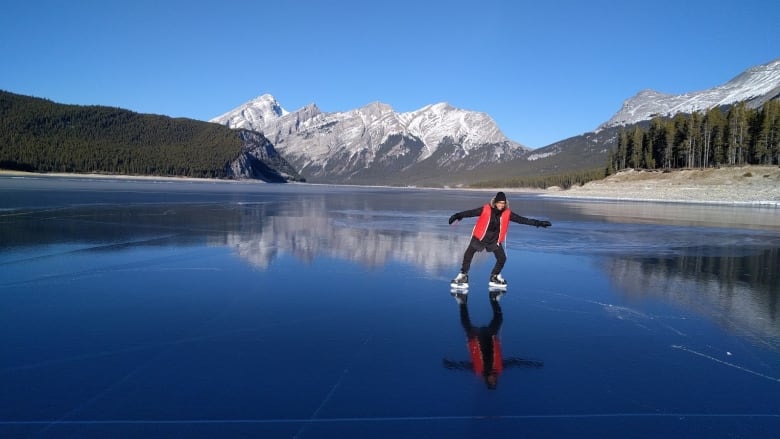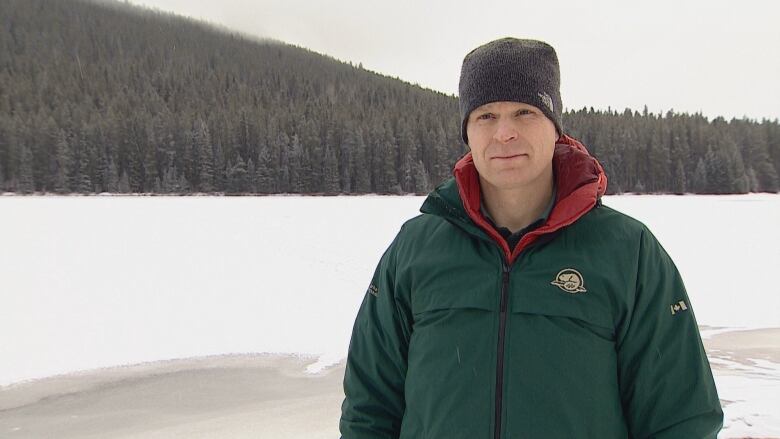Skating on mountain lakes far from risk free, says Parks Canada expert
Parks Canada does not monitor ice conditions, but Red Cross has lots of safety tips
So far this year, no one has died while skating on mountain lakes in Banff National Park, but that doesn't mean lacing up is without risk, a Parks Canada expert says.
"We don't monitor skating conditions actively," Aaron Beardmore told CBC News.
"But we do want people to make informed decisions and to know the risks of skating on frozen lakes in the winter time."
A dump of snow overnight Sunday has made safety more challenging, he says.

"The snow conceals the ice cracks visually. Cracks in the ice are a really good indicator to tell how thick the ice is," he said. "The Canadian Red Cross recommends 15 centimetres for single skaters and 20 centimetres for groups of skaters."
The greatest risk, which might seem obvious, is falling through unstable ice.
"There are risks of drowning and hypothermia when you are in the cold water. At all costs you want to avoid falling through the ice," Beardmore said.

But a little planning could pay off, he said.
"You can shovel off an area," Beardmore explained.
"You can look down to see how deep the cracks are, to see if it's an adequate thickness for skating on. You can pre-determine an areaand slowly inspect the ice in that area. If you stay within that confined area, you shouldn't have a problem."

Red Cross says ice colour is important and clear, blue ice is the strongest.
"White opaque or snow ice is half as strong as blue ice. Opaque ice is formed by wet snow freezing on the ice," the agency says.
And grey ice, because it indicates the presence of water, is unsafe.
Most people don't use safety tools on the ice, Beardmore said, but it can further reduce the risk of injury.

"You could wear a personal flotation device. Perhaps you could have some sort of ice pick attached to your glove so that if you fell in you could pull yourself up. You could wear a helmet to reduce the risk of you falling over and hitting your head on the ice."
Beardmore says they have had a handful of accident reports this year, all on the Two Jack Lake, but no serious injuries.
"We do have reports of people falling in, so the risks are very real," he said.

- MORE ALBERTA NEWS |White Christmas in the cards for Calgary
- MORE ALBERTA NEWS |Calgary's transportation manager resigns from senior city role under mysterious circumstances
With files from CBC's Monty Kruger













_(720p).jpg)


 OFFICIAL HD MUSIC VIDEO.jpg)
.jpg)



























































































